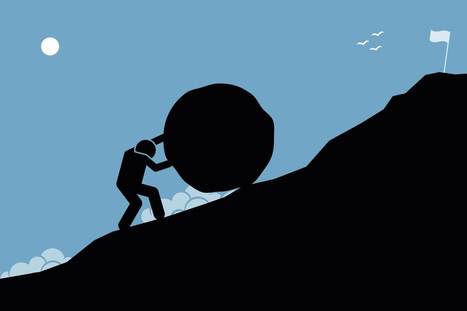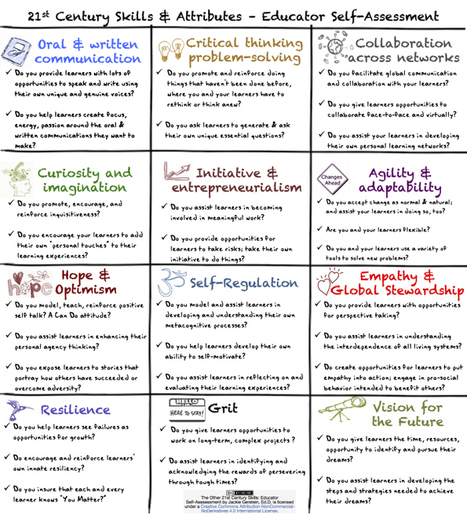When educators help students “cultivate an approach to life that views obstacles as a critical part of success, we help them develop resilience,” writes Marilyn Price-Mitchell, a developmental psychologist and author. “Resilience is not a genetic trait. It is derived from the ways that children learn to think and act when faced with obstacles large and small.” When the adults in children’s lives—caregivers, teachers, coaches—help young people develop resilience, it helps them “emerge from challenging experiences with a positive sense of themselves and their futures,” says Price-Mitchell.
Get Started for FREE
Sign up with Facebook Sign up with X
I don't have a Facebook or a X account
 Your new post is loading... Your new post is loading...
 Your new post is loading... Your new post is loading...

David Baker's curator insight,
February 17, 2015 10:54 AM
The power of the Infographic is that it references both teacher and student actions and habits. I have shared it with my teachers. This might become a solid self-assessment tool for coaching conversations with teachers. 
Kristen McDaniel's curator insight,
April 3, 2015 12:05 PM
Interesting graphic with some great ideas on interpreting 21st century skills as they pertain to teaching |

David Baker's curator insight,
February 17, 2015 10:54 AM
The power of the Infographic is that it references both teacher and student actions and habits. I have shared it with my teachers. This might become a solid self-assessment tool for coaching conversations with teachers. 
Kristen McDaniel's curator insight,
April 3, 2015 12:05 PM
Interesting graphic with some great ideas on interpreting 21st century skills as they pertain to teaching |
















